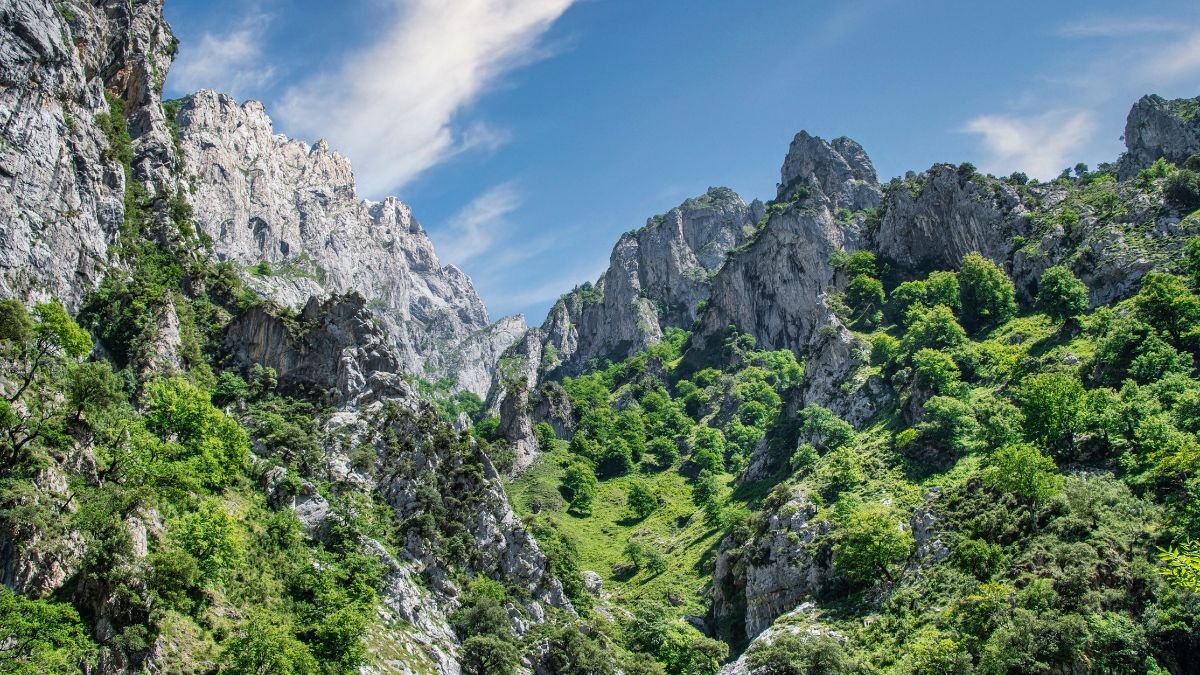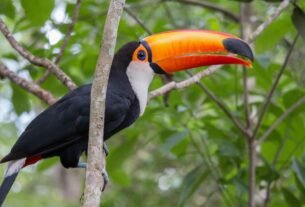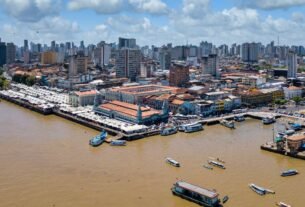Introduction
Have you ever wondered where South America’s geographical heart lies? Nestled in the heart of Mato Grosso, Brazil, lies a hidden gem known as Chapada dos Guimarães that boasts some of the most breathtaking landscapes on the continent.
This area is not only significant for its central location but also for its diverse range of ecosystems, which include lush forests and arid plateaus. This UNESCO-recognized treasure is a paradise for nature lovers and adventurers alike, offering a unique opportunity to witness the incredible diversity of flora and fauna that thrive in this remarkable region.
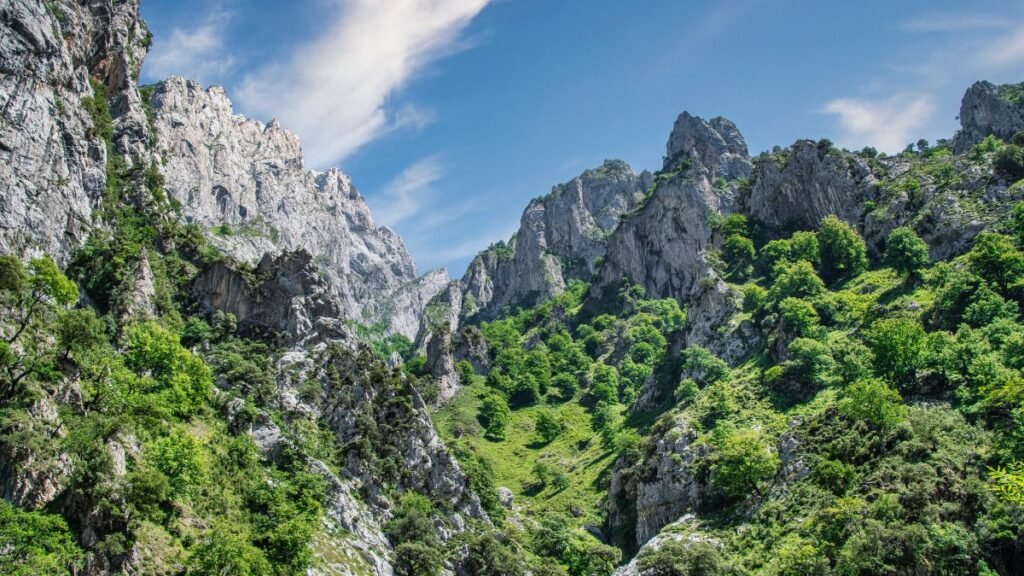
With its dramatic sandstone cliffs rising 600-800 meters high, this region has been shaped by over 500 million years of geological activity. The national park spans 32,630 hectares, protecting not only the headwaters of the Pantanal but also ancient archaeological sites. It’s a place where the Amazon rainforest meets the cerrado biome, creating a unique blend of biodiversity.
From cascading waterfalls to mystical caves, this destination offers a journey through time and nature. Ready to explore the wonders of this extraordinary landscape? Let’s dive in.
Key Takeaways
- Located in Mato Grosso, Brazil, this region is the geographical center of South America.
- Features dramatic sandstone cliffs shaped by 500 million years of geological activity.
- The national park spans 32,630 hectares, protecting vital ecosystems and archaeological sites.
- A transition zone between the Amazon rainforest and the cerrado biome, offering unique biodiversity.
- Home to stunning waterfalls, caves, and other natural wonders.
Introduction to Chapada dos Guimarães
Step into a place where colonial charm meets otherworldly intrigue. This town, founded over 200 years ago, is a treasure trove of preserved colonial architecture. Its cobblestone streets and historic buildings transport visitors back in time, offering a glimpse into Brazil’s rich past.
The architecture reflects a blend of indigenous and European influences, showcasing the diverse cultural heritage that has shaped the region over the centuries. Each corner of the town tells a story, inviting exploration and appreciation of its artistic and historical significance.
But there’s more to this area than just history. Since the 1970s, it has gained a reputation as a hotspot for UFO sightings and esoteric practices. Alternative communities have flocked here, drawn by its mystical energy and spiritual significance. Some even call it the “esoteric capital” of South America.
This reputation has attracted not only tourists but also researchers and enthusiasts eager to uncover the mysteries that surround the town. Various festivals and gatherings celebrate these unique aspects, further enriching the local culture and providing a space for like-minded individuals to connect and share their experiences.
Located just 65 kilometers from Cuiabá in the state of Mato Grosso, this town is home to around 16,000 residents, a vibrant community that reflects a blend of cultures and traditions. Its strategic position makes it the continental midpoint between the Atlantic and Pacific Oceans, a geographical marvel that enhances its significance in regional travel.
This unique point adds to its allure, making it a must-visit destination for travelers seeking both adventure and cultural enrichment. The town’s charm is further amplified by its friendly locals and a variety of artisanal shops, where visitors can find handcrafted goods that showcase the area’s rich heritage.
Perched at an elevation of 2,400 feet, the area offers stunning views of the Pantanal lowlands, a UNESCO World Heritage site known for its incredible biodiversity. This height advantage not only provides breathtaking panoramas but also creates a cooler climate, perfect for exploring its natural and cultural wonders.
The elevation contributes to a unique ecosystem, making it an ideal spot for outdoor activities such as hiking, birdwatching, and photography, allowing visitors to immerse themselves in the beauty of the landscape while enjoying the refreshing air.
Exploring Chapada dos Guimarães National Park
Discover a landscape shaped by millions of years of geological history. This park is a testament to nature’s artistry, with its towering cliffs and unique ecosystems. The diverse topography includes dramatic rock formations, deep canyons, and lush valleys, all of which contribute to the park’s stunning vistas.
It’s a place where the past and present collide, offering visitors a chance to explore both natural and cultural wonders. As you wander through the park, you can encounter various species of flora and fauna, some of which are endemic to the region, showcasing the ecological significance of this area. The vibrant colors of the landscape, particularly during sunrise and sunset, create an unforgettable experience for those who venture into its depths.
History and Creation of the Park
The park was established to protect the upper Paraguay River basin and the headwaters of the Cuiabá River, a vital ecosystem that supports a wide variety of wildlife and plant species. Its creation marked a significant step in preserving the area’s biodiversity and archaeological treasures, ensuring that these natural and cultural resources are safeguarded for future generations.
The name “chapada” refers to a plateau with cliffs, a fitting description for this region’s dramatic landscape, characterized by its unique geological formations and breathtaking views.
Over 40 archaeological sites have been discovered here, showcasing fossils and ancient cave paintings that provide invaluable insights into the lives of the early inhabitants of this land. These findings highlight the area’s rich history, dating back to a time when it lay over an ancient tectonic fault line, which has shaped not only the landscape but also the cultural narratives of the region.
Marine fossils found in the rock formations add another layer to the geological story, revealing the area’s past as a submerged environment teeming with life, thus enriching our understanding of the Earth’s evolutionary history and the changes it has undergone over millions of years.
Location and Geography
Located at coordinates 15°21′32″S 55°53′53″W, the park spans the municipalities of Cuiabá and Chapada dos Guimarães, a strategic location that makes it accessible for both local and international visitors. Its elevation ranges from 600 to 800 meters, creating a tropical climate with temperatures between 12°C and 25°C.
The varied elevation contributes to a diverse range of ecosystems within the park, making it an ideal destination for year-round exploration and outdoor activities, including hiking, bird-watching, and photography.
The rock formations here are primarily sandstone, which has been shaped by millennia of natural processes, housing not only archaeological sites but also stunning natural features, such as caves rich in biodiversity. These caves often serve as habitats for a variety of species, including bats and unique insects. From the Morro dos Ventos lookout, visitors can see the Pantanal wetlands in the distance, adding to the park’s allure and providing a breathtaking view that encapsulates the beauty of the region’s landscape.
Top Natural Wonders in Chapada dos Guimarães
Imagine standing at the true center of a continent, where nature’s grandeur unfolds in every direction. This is the essence of the Guimarães National Park, a place where geography and beauty converge. From towering cliffs to mystical viewpoints, this region offers a journey through some of South America’s most stunning landscapes.
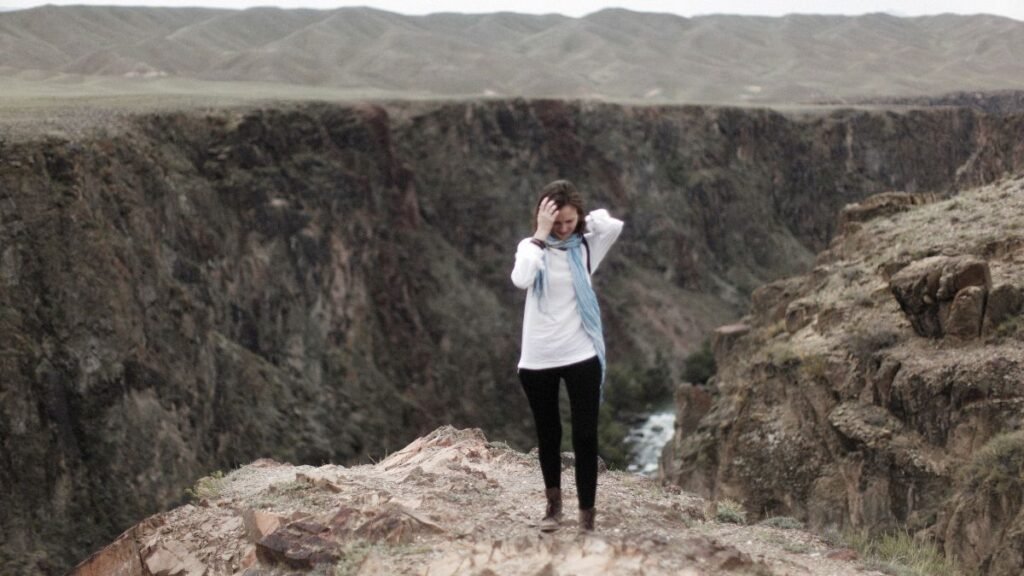
Véu da Noiva Waterfall
One of the most iconic sights in the area, Véu da Noiva, or “Bride’s Veil,” is a cascading waterfall that plunges an impressive 86 meters into a lush canyon, surrounded by vibrant flora and fauna. The mist from the falls creates a stunning rainbow on sunny days, adding to its magical allure and providing a perfect backdrop for photographs.
Visitors can enjoy the breathtaking view from a nearby platform that offers a safe vantage point, or take a short hike along well-marked trails to get closer to the water, where they can feel the refreshing spray and immerse themselves in the natural beauty of the surroundings.
Cidade de Pedra
Known as the “City of Stone,” this unique rock formation resembles a skyline of ancient buildings, with towering sandstone structures that rise majestically from the earth. These geological wonders are a testament to millions of years of erosion and natural sculpting by the elements. Exploring this area feels like stepping into another world, with every turn offering a new perspective and hidden nooks to discover.
The formations create a labyrinth of pathways, inviting adventurous spirits to wander and appreciate the intricate details carved into the stone over eons.
Mirante de Geodésia
Perched at the edge of a cliff, Mirante de Geodésia marks the true continental center point of South America, as confirmed by modern GPS technology. This remarkable viewpoint offers 360° panoramic views, where the vast Pantanal wetlands meet the expansive plateau, creating a breathtaking vista that stretches as far as the eye can see.
Latitude and longitude markers highlight its geodesic significance, making it a must-visit for geography enthusiasts and anyone captivated by the wonders of our planet. The experience of standing at this geographical nexus is both humbling and exhilarating, reminding visitors of the earth’s vastness and the intricate connections that bind us all.
“Standing here, you feel the pulse of the continent, where the earth’s vastness meets breathtaking beauty.”
The dry season, from May to September, is the best time to visit for clear skies and optimal visibility. Nearby hiking trails lead to lesser-known viewpoints, perfect for those seeking solitude. However, visitors should be cautious of strong winds at the cliff edge.
| Feature | Details |
|---|---|
| Location | True continental center point |
| Best Time to Visit | Dry season (May-September) |
| Activities | Hiking, panoramic views, photography |
| Safety Tip | Beware of strong winds at cliff edges |
For more information about exploring this remarkable region, check out Chapada dos Guimarães.
Activities and Adventures in Chapada dos Guimarães
Adventure awaits in a land where nature’s wonders are endless. From thrilling hikes to mesmerizing waterfalls, this region offers something for every explorer. Whether you’re a seasoned trekker or a casual traveler, the activities here will leave you in awe.
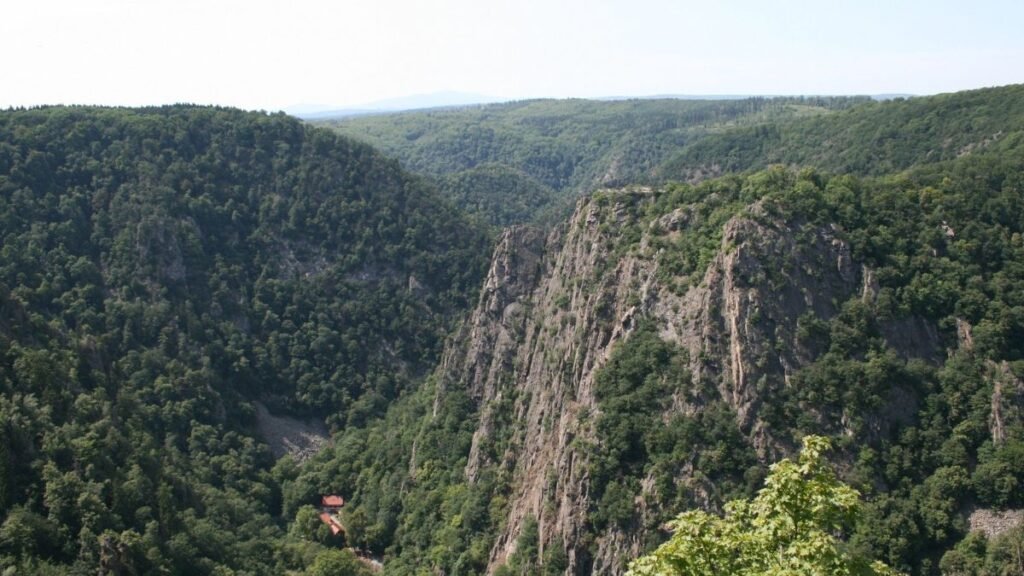
Hiking and Trekking
The trails here are a hiker’s paradise, offering a diverse range of experiences that cater to all levels of adventurers. With routes ranging from easy walks that meander through lush landscapes to challenging climbs that reward you with breathtaking panoramic views, there’s a path for every skill level.
Explore the dramatic cliffs and hidden valleys that make this area so unique, each turn revealing a new facet of the stunning natural beauty that surrounds you.
For a truly memorable experience, be sure to visit the Poço do Pinguço natural pool. Nestled amidst the vibrant greenery, its crystal-clear waters are perfect for a refreshing swim after a long hike, providing a rejuvenating escape from the heat.
The serene environment and the soothing sounds of nature enhance the experience, making it a perfect spot for relaxation and reflection. Remember, the best time to visit is from May to September, when the weather is ideal, allowing you to fully enjoy the trails and the natural pool without the interference of rain or extreme heat.
Waterfall Tours
With over 15 named waterfalls, this region is a haven for nature lovers. One of the most impressive is Portão do Inferno, with a 70-meter drop that will take your breath away. For those seeking hidden gems, Cachoeira do Pulo is a must-see, although it requires a 4-wheel drive vehicle to access.
Seasonal variations play a big role in your experience. The peak flow from January to April offers a powerful spectacle, while the calmer waters from May to September are safer for swimming. Always stick to marked trails and consider hiring a local guide for safety.
Combine your waterfall adventure with a visit to Caverna Aroe Jari, one of the region’s fascinating caves. Its unique formations and cool interiors provide a perfect contrast to the outdoor activities.
| Activity | Details |
|---|---|
| Hiking | Trails for all skill levels, scenic views |
| Waterfall Tours | Over 15 named falls, seasonal variations |
| Cave Visits | Explore Caverna Aroe Jari’s unique formations |
| Safety Tips | Stick to marked trails, hire local guides |
Wildlife and Flora of Chapada dos Guimarães
The diverse ecosystems of this region are a haven for nature enthusiasts. From exotic wildlife to unique vegetation, the area offers a rich tapestry of biodiversity that is both captivating and essential for ecological balance. The landscape combines cerrado scrub, semi-deciduous forest, and altitude grasslands, creating a unique environment for both plants and animals. This intricate interplay of ecosystems supports a variety of life forms, making it a critical area for conservation efforts.
Exotic Wildlife
This region is home to a diverse array of wildlife, including the endangered Lychnophora ericoides. The area’s diverse habitats support animals adapted to both forest and grassland environments, showcasing the remarkable adaptability of life.
Birdwatchers will find plenty to admire, with numerous species thriving in the cerrado biome, such as the striking Red-shouldered Macaw and the elusive Giant Anteater. Each visit can reveal new sightings, as the wildlife is abundant and varied, contributing to the area’s rich ecological narrative.
Unique Vegetation
The vegetation here is as varied as the wildlife. Local Quilombola communities have long utilized medicinal plants found in the area, highlighting the profound connection between culture and nature. Orchids bloom from September to November, while bromeliads showcase their vibrant colors from December to February, adding splashes of color to the landscape.
Cork trees have adapted to survive wildfires, a testament to nature’s resilience and an example of how species evolve to thrive in challenging conditions. This adaptation not only protects the trees but also supports the broader ecosystem by providing habitat and food for various organisms.
However, visitors should be cautious of urtiga bushes, also known as stinging nettles. Touching these plants can cause skin irritation, so it’s best to admire them from a distance.
| Feature | Details |
|---|---|
| Medicinal Plants | Used by Quilombola communities |
| Blooming Seasons | Orchids (Sep-Nov), Bromeliads (Dec-Feb) |
| Fire Adaptation | Cork trees survive wildfires |
| Endangered Species | Lychnophora ericoides |
| Caution | Avoid touching urtiga bushes |
Exploring the wildlife and flora of this region is a journey into the heart of nature’s wonders. Whether you’re a botanist, a wildlife enthusiast, or simply a curious traveler, the area’s biodiversity will leave you inspired.
Practical Travel Tips for Visiting Chapada dos Guimarães
Planning a trip to this stunning region requires some insider tips to make the most of your adventure. From timing your visit to choosing the right accommodations, these practical suggestions will ensure a smooth and memorable experience.
Best Time to Visit
The dry season, from May to September, is the ideal time to explore this area. During these months, the weather is pleasant, and trails are easier to navigate. The dry season not only offers comfortable temperatures but also presents an opportunity to witness the vibrant wildlife as animals are more active and visible.
If you’re visiting during the peak season (July-September), book accommodations at least three months in advance to ensure your stay is secured. This period coincides with the blooming of various native plants, making it a photographer’s paradise and a chance to see the region’s rich biodiversity in full display.
Getting There and Around
The nearest major city is Cuiabá, located about 65 kilometers away. From there, you can rent a car or take a bus to reach the town. The bus service is reliable and offers a scenic route, while renting a car provides the freedom to explore at your own pace.
Once inside the park, having a vehicle is recommended for flexibility, though guided tours are also available for those who prefer a structured experience. These tours often include knowledgeable guides who can enhance your understanding of the local ecology and geology, making your visit even more enriching.
Accommodation Options
Whether you’re looking for luxury or budget-friendly stays, this region has something for everyone. Parque Hotel offers mid-range comfort, while Pousada Penhasco provides a more upscale experience. For those seeking a closer connection to nature, camping inside the park boundaries is an option. Homestays with local families are also available, offering a unique cultural experience.
Keep in mind that air conditioning is limited outside of upscale properties, so plan accordingly if you’re sensitive to warmer temperatures.
- Top Stays: Parque Hotel (mid-range), Pousada Penhasco (luxury).
- Booking Tip: Reserve 3 months or more ahead for July-September visits.
- Camping: Available within park boundaries.
- Homestays: Connect with local families for an authentic experience.
- Comfort Note: Limited AC outside luxury accommodations.
Conclusion
As a UNESCO Biosphere Reserve, chapada dos guimarães stands as a testament to nature’s grandeur and cultural richness. This national park offers a unique blend of adventure, culture, and ecology, making it a must-visit destination for travelers seeking both excitement and insight.
With tourist numbers growing by 15% annually, early planning is essential to secure accommodations and tours. The increasing popularity, however, brings challenges, particularly from climate change, which threatens the region’s delicate ecosystems.
Visitors are encouraged to practice responsible tourism, respecting the environment and local communities. By doing so, we can help preserve the beauty and heritage of Dos Guimarães for future generations. Plan your trip thoughtfully and experience the magic of this extraordinary destination. Learn more Animals in Pantanal.
FAQ
What is the best time to visit Chapada dos Guimarães?
The best time to visit is during the dry season, from May to September, when the weather is pleasant, and the waterfalls are at their fullest.
How do I get to Chapada dos Guimarães National Park?
The park is accessible by car or bus from Cuiabá, the capital of Mato Grosso, which is about 67 kilometers away. The drive takes roughly 1.5 hours.
What are the must-see attractions in the area?
Don’t miss Véu da Noiva Waterfall, Cidade de Pedra, and Mirante de Geodésia. These sites showcase the region’s stunning cliffs, rock formations, and panoramic views.
Are there guided tours available in the park?
Yes, guided tours are available for hiking, waterfall visits, and wildlife spotting. Local guides offer insights into the area’s history, geography, and unique vegetation.
What kind of wildlife can I expect to see?
The park is home to exotic wildlife, including toucans, macaws, and howler monkeys. You may also spot unique plant species adapted to the sandstone terrain.
Is hiking suitable for beginners in Chapada dos Guimarães?
Yes, there are trails for all skill levels. Beginners can enjoy easier routes, while experienced hikers can tackle more challenging paths with rewarding views.
What accommodation options are available nearby?
Visitors can choose from eco-lodges, guesthouses, and hotels in the town of Chapada dos Guimarães. Many options cater to different budgets and preferences.
Can I swim in the waterfalls?
Swimming is allowed in certain waterfalls, but always check with local guides for safety and accessibility, as conditions can vary.
What should I pack for a trip to the park?
Bring sturdy hiking shoes, sunscreen, a hat, insect repellent, and plenty of water. A camera is essential to capture the breathtaking landscapes.
Are there any restrictions in the national park?
Yes, visitors must follow park rules, such as staying on marked trails, not littering, and respecting wildlife. Some areas may require permits for access.

